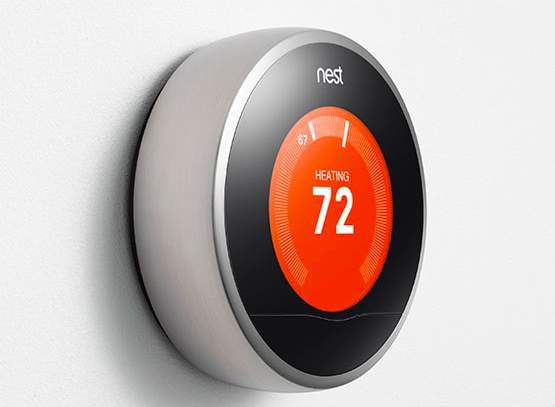 There has been a lot of buzz over the past year about the coming Internet of Things that has only been accelerated with the recent purchase of Nest by the internet giant Google. Clearly Google believes the future is in what is often referred to as the smart home. Since the post WW II baby boom, there has been continuous talk about a futurescape where robotics, computers and communication would turn our lives into mostly leisure and comfort. It seems Google is pushing hard for that future.
There has been a lot of buzz over the past year about the coming Internet of Things that has only been accelerated with the recent purchase of Nest by the internet giant Google. Clearly Google believes the future is in what is often referred to as the smart home. Since the post WW II baby boom, there has been continuous talk about a futurescape where robotics, computers and communication would turn our lives into mostly leisure and comfort. It seems Google is pushing hard for that future.
Unfortunately there is a dirty little secret (that’s not so secret) out there about the internet of things and that is that it means more energy consumption, not necessarily less. Despite the gains being made in energy efficiency, thanks in large part to energy efficiency programs, energy labeling and greater consumer awareness, energy consumption continues to rise. Since 1993 the average amount of energy a home uses has actually increased, albeit slightly rather than decline. Looking at the data, the reason is plain to see. Home heating consumption decreased more than 10% between 1993 and 2009, but energy consumed by the use of electronics, lighting and appliances has gone up by nearly the same amount. This includes the fact that more and more appliances are being certified ENERGY STAR rated and compact fluorescent lighting (CFLs) achieving as much as 53% market share in some areas by 2009. Which leaves electronic devices as the culprit.
The world is now filled with electronic gadgets. There are more than two billion television sets in the world and a billion personal computers. In addition we now have smart phones and tablets to add to the list of energy sucking personal gadgets. As of the fourth quarter of 2013 Apple reported they had sold over 200 million iOS devices globally. Our homes are already filled with an increasing number of gadgets from tablets to Xbox consoles, magnified by families with teenagers who each have their own set of electronic gadgets. Many of the gadgets we now use are constantly connected to the grid and therefore using electricity 24 hours a day. This ‘phantom load’ adds up over time and is invisible to most people because the device may be turned off, but it is still using electricity in the background. Compounding this mass of electronic gadgets filling our homes is the supply chain required to make them, which more often than not carries with it a large carbon footprint.
The Nest Thermostat and their Protect smart smoke detector are wonderful products which help reduce energy consumption through behavioral learning and could even protect us from ourselves when we remove annoying batteries from smoke detectors when they can’t be shut off from false alarms. Unfortunately, these products along with an exponentially increasing range of products that aim to interconnect us with our homes through our smart phones or tablets will only exacerbate the challenge of lowering our energy consumption. The International Energy Agency (IEA) estimates that our personal electronic energy usage could triple by 2030. That runs the very real risk of offsetting all the hard work that energy efficiency programs and those that support them are working so hard to combat every day.
The smartest device in your house remains you. The choices you make are still the most effective way to reduce our energy consumption and being cautious about adding yet another electronic gadget to the mix of our already increasing home energy consumption is a good place to start. The next place is making the choice to retrofit your house with even the basic additions of more insulation, compact fluorescent or LED light bulbs and turning down your thermostat, even if it’s a Nest. Before we fully embrace the next big thing in the internet of things, we should consider the energy of things first.